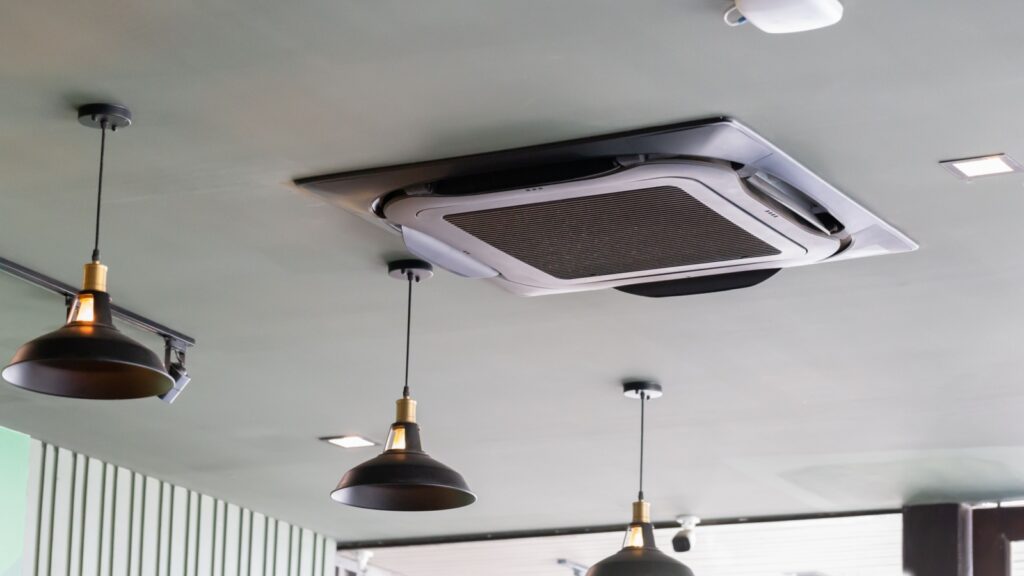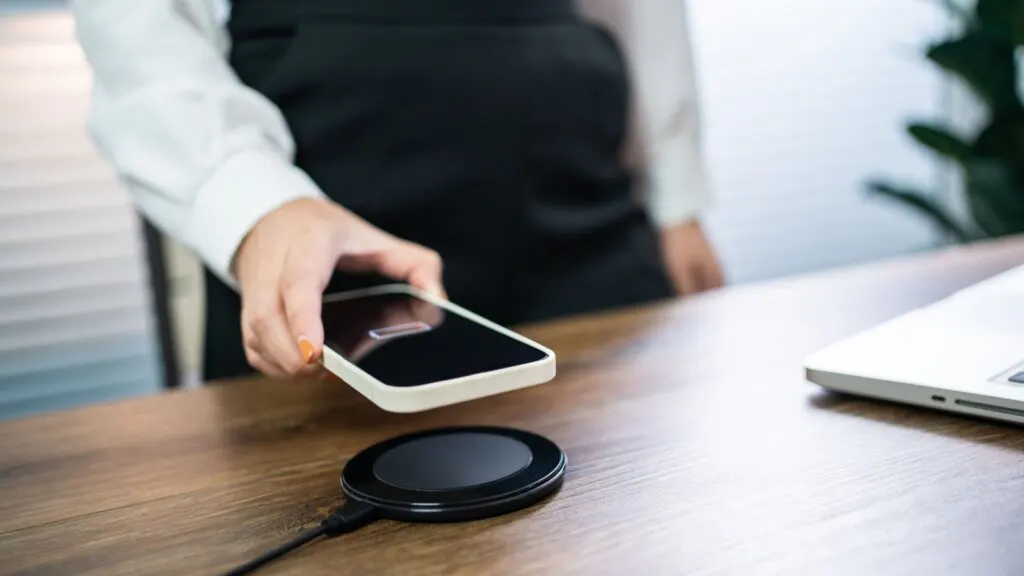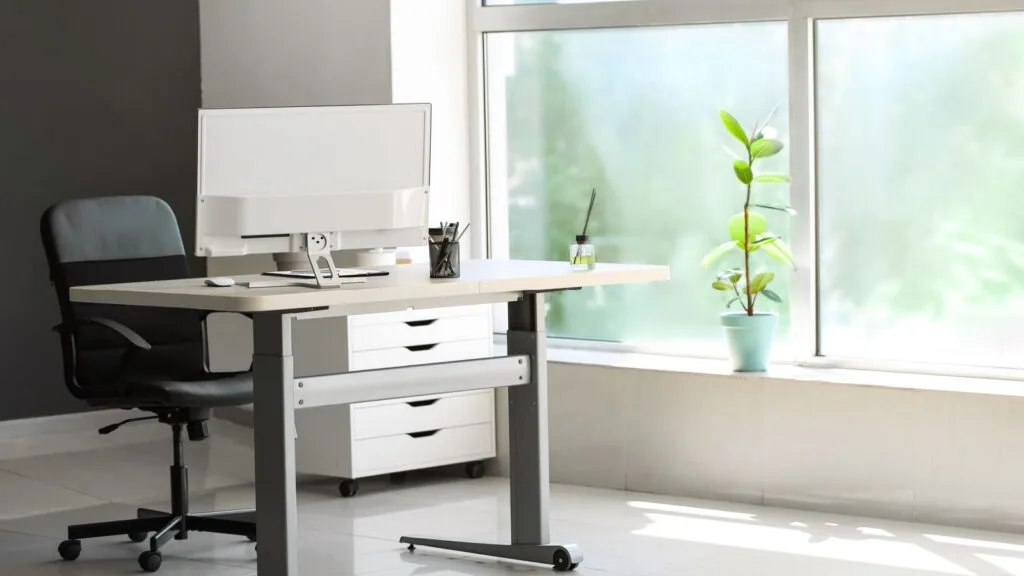Creating a smart office environment goes beyond just having the latest gadgets; it’s about integrating technology to enhance productivity and comfort. A smart office can improve workflow, communication, and overall efficiency.
Embracing smart office solutions can transform your workspace into a modern, efficient, and enjoyable place to work. Discover 15 practical tips to design a smart office environment that meets the needs of today’s workforce.
Implement Smart Lighting

Smart lighting systems allow you to adjust the brightness and color temperature according to the time of day and type of work being done. This can reduce eye strain, enhance focus, and improve overall mood. Automated lighting schedules can also save energy by ensuring lights are only on when needed.
By integrating smart lighting with motion sensors, you can ensure that lights turn off automatically when rooms are unoccupied. This not only contributes to energy efficiency but also adds convenience. Additionally, smart lighting can be controlled remotely, allowing adjustments to be made even when you are not physically present in the office.
Use Smart Thermostats

Smart thermostats enable you to control the temperature of your office environment with precision. These devices learn your preferences over time and adjust the heating and cooling accordingly, ensuring a comfortable workspace. This can lead to increased productivity as employees are more comfortable.
Energy efficiency is another significant benefit of smart thermostats. They can be programmed to reduce energy usage during non-working hours and optimize it during peak times. Remote access allows you to adjust settings from anywhere, providing flexibility and control over your office environment.
Install Smart Security Systems

A smart security system offers enhanced protection for your office through features like remote monitoring, motion detection, and instant alerts. Cameras and sensors can be integrated into a central system that you can access from your smartphone or computer. This provides peace of mind and ensures that your office is secure at all times.
Smart security systems also offer automated responses, such as locking doors or activating alarms when suspicious activity is detected. This reduces the need for constant human monitoring and enhances overall security. Additionally, the ability to review footage remotely helps in quickly addressing any security concerns.
Adopt Collaborative Tools

Tools like smart whiteboards and digital collaboration platforms can significantly enhance teamwork and communication. These technologies allow for real-time collaboration, regardless of where team members are located. This can streamline project management and improve efficiency.
Collaborative tools often come with features such as file sharing, video conferencing, and task management. These functionalities help keep everyone on the same page and ensure that projects stay on track. By integrating these tools into your workflow, you can create a more connected and productive office environment.
Use Ergonomic Furniture

Smart office environments should prioritize the health and comfort of employees. Ergonomic furniture, such as adjustable desks and chairs, helps reduce the risk of musculoskeletal issues. This can lead to fewer sick days and higher productivity.
Additionally, many modern ergonomic solutions come with smart features like posture correction alerts and activity tracking. These tools encourage employees to maintain healthy habits throughout the workday. Investing in ergonomic furniture is an investment in your team’s well-being and efficiency.
Implement Voice-Activated Assistants

Voice-activated assistants like Amazon Alexa or Google Assistant can streamline various office tasks. These devices can manage calendars, set reminders, and control other smart office devices with simple voice commands. This can save time and reduce the need for manual inputs.
Voice-activated assistants can also be used for more complex tasks, such as conducting searches or providing real-time information. Their integration with other smart devices enhances the overall functionality of your office. This hands-free approach can lead to a more efficient and convenient working environment.
Integrate Smart Scheduling Tools

Smart scheduling tools help manage appointments, meetings, and deadlines efficiently. These tools can sync with your calendar and send reminders to ensure you never miss an important event. They can also suggest optimal meeting times based on everyone’s availability.
By automating scheduling, you reduce the time spent on coordinating meetings and minimize scheduling conflicts. These tools often come with additional features like video conferencing integration and room booking capabilities. This makes managing your time and resources much more streamlined and efficient.
Utilize Smart Storage Solutions

Smart storage solutions, such as digitally managed filing systems, help keep your office organized. These systems can track the location of files and documents, making retrieval quick and easy. This reduces the time spent searching for important paperwork.
In addition to physical storage, cloud-based storage solutions allow for secure and accessible digital file management. These platforms provide backups and data recovery options, ensuring that your documents are always safe. By combining smart physical and digital storage solutions, you can maintain an organized and efficient office.
Employ Air Quality Monitors

Good air quality is crucial for maintaining a healthy and productive office environment. Smart air quality monitors can detect pollutants, humidity levels, and temperature, providing real-time feedback. This allows you to take immediate action to improve the air quality if needed.
These monitors can be integrated with HVAC systems to automatically adjust airflow and filtration. Maintaining optimal air quality can reduce the risk of illnesses and improve overall comfort for employees. Investing in air quality monitors is a proactive step towards a healthier workspace.
Use Smart Power Strips

Smart power strips can help manage the energy consumption of office devices. These strips allow you to control and monitor the power usage of connected devices remotely. They can also schedule devices to turn off when not in use, reducing energy waste.
By using smart power strips, you can identify and eliminate phantom loads, which are energy consumed by devices in standby mode. This contributes to a more energy-efficient office. Additionally, many smart power strips come with surge protection, adding an extra layer of safety for your electronics.
Implement Smart Windows

Smart windows can automatically adjust their tint based on the amount of sunlight, reducing glare and heat gain. This can improve comfort and reduce the need for artificial lighting and air conditioning. Smart windows can also be controlled remotely, allowing for adjustments based on weather conditions.
In addition to energy efficiency, smart windows can contribute to a more aesthetically pleasing office environment. They offer a modern look and can enhance the overall ambiance of the workspace. Investing in smart windows can lead to long-term savings on energy costs and improve employee satisfaction.
Use Wireless Charging Stations

Wireless charging stations eliminate the need for multiple cables and adapters, reducing clutter in the office. These stations can charge multiple devices simultaneously, ensuring that employees’ devices are always powered up. This can enhance productivity by keeping essential tools ready for use.
Wireless charging stations are also more convenient and can be placed in common areas for easy access. They support a wide range of devices, making them a versatile addition to any office. By adopting wireless charging technology, you can create a cleaner and more efficient workspace.
Integrate Smart Workstations

Smart workstations are equipped with technology that adapts to the user’s needs, such as height-adjustable desks and personalized lighting settings. These features can improve comfort and productivity by allowing employees to customize their workspace. Smart workstations can also include integrated power sources and cable management systems.
By providing employees with smart workstations, you encourage a healthier and more efficient work environment. These workstations can track usage patterns and suggest adjustments to improve ergonomics. Investing in smart workstations is a step towards creating a more adaptable and user-friendly office.
Utilize Noise-Cancelling Technology

Noise-canceling technology can create a quieter and more focused work environment. Devices such as noise-canceling headphones or soundproof panels can reduce distractions from background noise. This can enhance concentration and productivity, especially in open office spaces.
Integrating noise-cancelling technology into meeting rooms can improve communication clarity. This is particularly useful for video conferences and presentations. By reducing noise pollution, you create a more pleasant and effective workspace.
Adopt Smart Recycling Solutions

Smart recycling solutions can streamline waste management in the office. These systems can track recycling habits and provide feedback on how to improve. Smart bins can also sort waste automatically, ensuring proper recycling practices are followed.
By adopting smart recycling solutions, you promote a sustainable office environment. These systems can reduce waste and improve overall efficiency in waste management. Encouraging recycling through smart solutions is an environmentally responsible choice that benefits the entire office.
